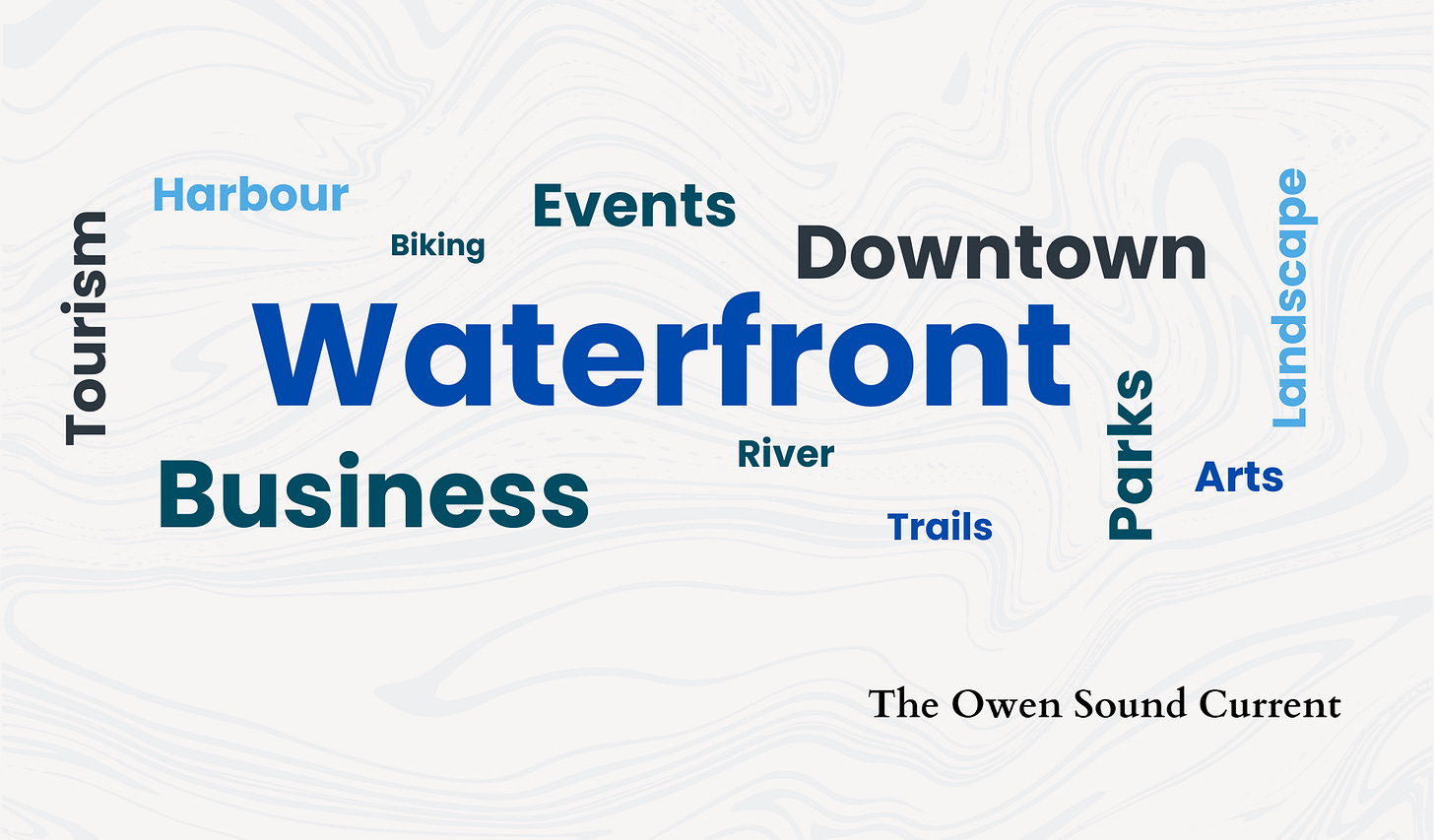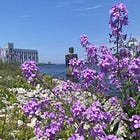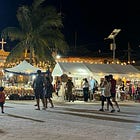Vision 2050 Report Part 3: Residents Say Less Red Tape, More Lift for Waterfront & Arts
Residents say Owen Sound’s strengths are underused—especially the harbourfront. Suggestions include less red tape, more support for volunteers, and trackable wins across parks, arts, and events.
In Part 1 of our Vision 2050 report, we released the full, verbatim survey responses to the City of Owen Sound’s 2024 community survey and dug into responses on whether Council’s existing priorities should be reframed. And in Part 2, we explored additional priorities community members want to see reflected by Council.
This week, we look at the next open-ended survey question: “What is one positive quality of Owen Sound that is not currently being celebrated or optimally leveraged?”
What Owen Sound Isn’t Celebrating — And How Residents Want That to Change
Asked what positive qualities aren’t being celebrated or leveraged, residents kept circling the same idea: the waterfront is Owen Sound’s unrealized heart. Dozens of submissions called the harbour and river “a jewel,” an “untapped opportunity,” and “underused.”
People weren’t vague about fixes, either. They want places to be, not just things to pass by: boardwalks, patios, small marinas, pop-up markets, regular programming. “Our waterfront is beautiful… so much more could be done,” wrote one City survey respondent.
Another pushed for a reset with Ottawa: “Re-engage divestiture so the city can shape the harbour.”
The second throughline is civic capacity that already exists and needs backing. Residents pointed to volunteers, arts groups, small venues, and organizers who quietly hold up the city week after week.
The ask wasn’t for new slogans; it was for fewer hurdles and more partnership.
“Support citizen-led initiatives,” one wrote, listing the Festival of Northern Lights and Salmon Spectacular. Another was blunter: “Cut the red tape” on events and use city property to help them scale.
Culture sits right between those two themes: it’s both a waterfront draw and a community engine we underplay. Respondents flagged the Tom Thomson connection, the symphony, theatre, and a dense calendar for a city this size.
“One of the busiest arts scenes in the province,” said one, urging the city to leverage that nationally. The subtext: arts are not a nice-to-have — they’re part of the city’s value proposition.
Nature and outdoor recreation got similar treatment.
People praised the trails, waterfalls, and bay access, then asked why it’s still hard to move between them without a car. “We lack safe, connective bike and walking infrastructure,” one wrote; another asked for basic wayfinding so visitors can actually find viewpoints and trailheads.
The message: connect what we already have.
Downtown vitality showed up as a prerequisite, not a side quest. Residents asked for Sunday hours (“Ridiculous in 2024” that many shops are closed, one wrote), consistent property standards, and basics like washrooms, cleaner parks, and needle disposal.
Some suggested low-lift activation — “Pop-up shops in empty storefronts,” or night markets on the river — paired with visible enforcement so those spaces feel usable again.
Finally, there was a branding nudge: stop presenting Owen Sound as a place people drive through on the way to somewhere else.
“Position us as a hub, not a pass-through,” one respondent wrote — and show the right images while we’re at it.
“Stop using the grain elevators in promo pics… show trails, waterfalls, parks.”
Key Takeaways
Residents are clear: the City’s biggest job now is to enable the people already doing the work.
Again and again, respondents asked Council to back the “doers”—the volunteers, artists, event organizers, youth leaders, and small business owners who are animating Owen Sound—by shifting City Hall from gatekeeper to partner.
That means streamlined permits and predictable timelines; access to civic spaces at reasonable rates; small, fast micro-grants; a one-stop point of contact for events; and proactive help with logistics like insurance, washrooms, waste, and traffic plans.
In short: less red tape, more lift.
They want that enabling approach applied first where it matters most: at the water’s edge and through the downtown.
Residents envision practical, near-term steps—boardwalk segments, modest dockage for day boaters, patios and cafés, pop-up markets and regular programming—paired with stronger property standards, cleaner public spaces, working washrooms, and visible by-law presence alongside mental-health and harm-reduction supports.
Connect parks, trails and the bay with safer crossings and wayfinding, then tell a sharper story about the city’s arts, live music and festivals—with Sunday and evening hours to match.
The through-line is pragmatic: people aren’t asking for a megaproject; they’re asking the City to empower community energy and deliver a steady run of small, visible wins—tracked against clear targets and reported on regularly.
You’ll find all responses to this question in full in Column C of Owen Sound Current’s copy of the Vision 2050 raw survey results, obtained by our publication from the City of Owen Sound via an information and access request under the Municipal Freedom of Information and Protection of Privacy Act (MFIPPA).
Related:







